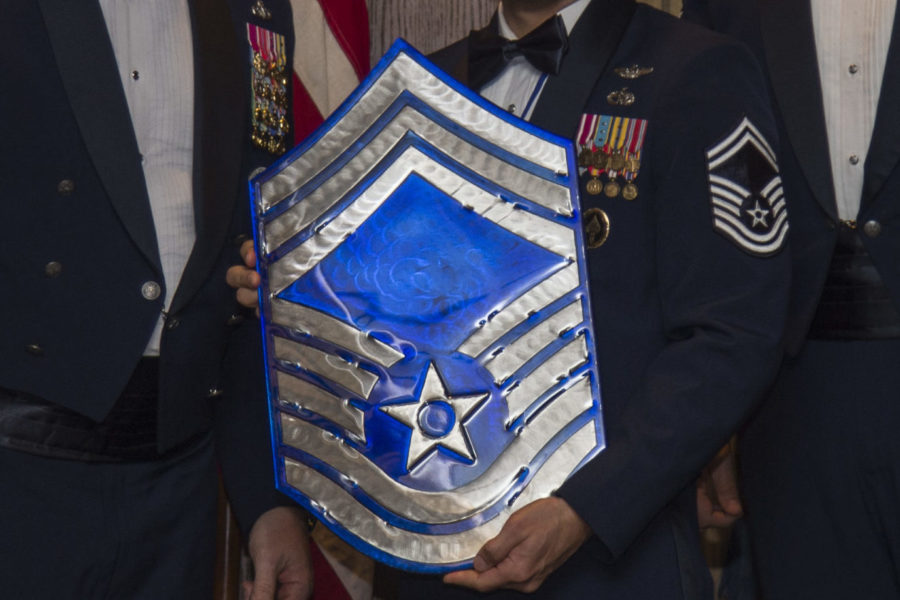The Air Force selected one out of every five eligible senior master sergeants for promotion to chief master sergeant, the service announced Dec. 1—a rate largely in line with years past, yet one that defies the larger trend of promotion rates among enlisted noncommissioned officers this year.
All told, 514 senior master sergeants were tapped to move up to the service’s highest enlisted rank short of Chief Master Sergeant of the Air Force, out of 2,526 eligible, for a percentage of 20.34.
That’s the highest rate in the last three years and just shy of the 20.96 percent selected in 2019. In the four years prior, the promotion rate ranged from 23.82 percent to 20.83.
The full list of newly selected chief master sergeants will be publicly released Dec. 6 at 9 a.m. Eastern time, the Air Force Personnel Center announced.
While the Air Force stayed with its general trend of elevating roughly one of every five eligible Airmen to E-9, other NCO ranks saw steep declines in promotion rates in 2022.
Just 9,706 senior airmen out of 45,991 eligible became staff sergeants—a 21.1 percent promotion rate, the lowest in nearly a quarter of a century.
Out of 33,935 eligible staff sergeants, 5,430 became tech sergeants, the fewest in at least a decade.
And just 4,040 technical sergeants were selected to become master sergeants out of 27,296, a 14.8 percent rate that was the lowest since at least 2010.
But the very highest echelons of the Air Force’s senior noncommissioned officer corps saw relatively stable promotion rates—in addition to the E-9 statistics, the percentage of master sergeants tapped for senior master sergeant was 8.28 percent, actually the highest mark in three years, though slightly under the 1-in-10 ratio typical of the late 2010s.
Some of the issues affecting promotion rates are broad—high retention amid the COVID-19 pandemic and end strength numbers plateauing.
In particular, though, the E-5, E-6, and E-7 ranks were affected by recent enlisted grade structure revisions intended to combat a decline in experience among NCOs.
“The majority of the experience decline was attributable to the Air Force trying to achieve an enlisted force structure with too many higher grades,” Col. James C. “Jim” Barger, Air Force Manpower Analysis Agency commander, said in a July statement. “We also found that experience levels would continue to decline unless the Air Force lays in more junior Airmen allocations and fewer E5-E7 allocations.”
Space Force Promotions
While the Air Force only announced its chief master sergeant promotions Dec. 1, the Space Force detailed its promotions for both chief master sergeant and senior master sergeant.
Of 328 eligible Guardians, 35 were tapped for senior master sergeant, for a 10.67 percent promotion rate. Of 55 eligible senior master sergeants, 15 made chief master sergeant, a 27.27 percent rate.
Given the Space Force’s small but rapidly expanding size, promotion rates can vary more, but the overall numbers are roughly similar to those from 2021.
Air Force Chief Master Sergeant Promotion Statistics
| YEAR | SELECTED | ELIGIBLE | PROMOTION RATE |
|---|---|---|---|
| 2022 | 514 | 2,526 | 20.34 |
| 2021 | 505 | 2,775 | 18.19 |
| 2020 | 518 | 2,763 | 18.75 |
| 2019 | 530 | 2,529 | 20.96 |
| 2018 | 479 | 2,241 | 21.37 |
| 2017 | 472 | 2,142 | 22.04 |
| 2016 | 531 | 2,229 | 23.82 |
| 2015 | 525 | 2,521 | 20.83 |
